There are moments in human history where we stand on the precipice of change so profound, it nudges the boundaries of what it means to be human. The invention of the wheel. The splitting of the atom. Now, add to that list the fusion of human consciousness with artificial intelligence. What if your thoughts could wirelessly control devices? What if knowledge could simply be downloaded into your brain like an app update hitting your smartphone? As astonishing as it sounds, this is no longer the domain of sci-fi blockbusters—it’s a scientific revolution en route, poised to redefine our capabilities, identity, and society.
From Elon Musk’s audacious proclamations about Neuralink to Ray Kurzweil’s daring prediction that humans will seamlessly integrate with machines by 2045, the concept of brain-machine symbiosis is attracting the world’s brightest minds. Trailblazers like David Eagleman, a celebrated neuroscientist, and Mary Lou Jepsen, founder of Openwater, are not only discussing this, but shaping it. Even Yuval Noah Harari, historian and author of "Homo Deus," has weighed in, warning of both promise and peril as humans edge toward integrating technology with biology on an unprecedented scale. This is no fringe dream—it is the reality of tomorrow smashing through the front door of today.
The convergence of AI and neuroscience has birthed the brain-machine interface (BMI): a technology that many believe will allow us to transcend biological limits. By linking directly with AI, a person might overcome paralysis, learn a new language overnight, or boost their creativity to levels we currently can't even comprehend. But here lies the rub—how far is too far when human consciousness blurs with artificial intelligence? Will this symbiosis liberate us from cognitive and physical confines, or will it open the gateway to dystopian manipulation?
In this article, we’ll dissect the science, explore the incredible possibilities, and examine the ethical minefields surrounding brain-machine symbiosis. Strap in; this could be a journey through the most mind-bending transformation humanity has ever encountered.
1.1 The Mechanics of Brain-Machine Integration
At its core, the brain-machine interface (BMI) is a marvel of human ingenuity that connects neurons to machines, translating the seemingly chaotic electrical activity of the brain into actionable data. Think of it like learning a new language where neurons fire as words, and BMIs act as the interpreter. Current breakthroughs in BMI technology revolve around both invasive and non-invasive methods to capture this neural dialogue.
Invasive systems, like the ones pioneered by Elon Musk’s Neuralink, involve implanting microscopic electrodes into the brain. These systems offer unparalleled precision in reading and writing neural signals but come with the complications of surgical procedures. On the other hand, non-invasive technologies, like EEG (electroencephalography) brain caps, allow for external scanning of brain activity without surgery. Companies such as OpenBCI are at the forefront of building brain caps that are more user-friendly and accurate, pushing this technology toward mainstream use.
Whether invasive or non-invasive, BMIs rely on a two-step process. First, they capture brain activity via electrodes. Second, cutting-edge algorithms decode these signals into specific commands that machines can "understand." This brain-to-device communication is already helping patients with paralysis operate robotic limbs, as seen in trials conducted at the University of Pittsburgh. A prosthetic arm controlled entirely through thought is not an abstract concept anymore—it’s a tested application of BMI technology.
1.2 AI's Role as a Cognitive Translator
Here’s where artificial intelligence steps in as the unsung hero of brain-machine interfaces, acting as the critical translator between the intricate signals of the brain and mechanical or digital systems. AI-driven neural decoders are becoming exponentially better at interpreting these signals in real time. Imagine trying to decipher a messy, handwritten note: now imagine AI stepping in to render that note in flawless, legible typeface. That’s essentially what AI does for our brainwaves within the BMI infrastructure.
Machine learning models, particularly deep learning frameworks, analyze neural signals using pattern recognition tools. An intriguing example comes from researchers at Stanford University, who developed an algorithm that enables BMI users to type entire sentences on a screen using only their thoughts. Similarly, AI also enables predictive functionality, like anticipating a user’s needs or intentions before they consciously translate it into actionable thought commands.
This combination of neural signals and AI algorithms has wide-ranging implications, from enabling severely paralyzed individuals to communicate faster to one day allowing regular users to control multiple devices simply through cognitive intention. It begs the bigger philosophical question: what does the merging of human thought and AI mean for the future of agency and self-awareness? While the functionality is exhilarating, the implications of relying so heavily on AI even in thought processes introduce a whole new layer of complexity.
2. Expanding Cognitive Capabilities Through AI
2.1 AI as a Cognitive Amplifier
Imagine having the ability to learn a new language overnight or mastering a complex skill like playing the violin without ever touching the instrument. Thanks to the fusion of AI and brain-machine interfaces (BMIs), what once seemed absurdly fictional is now inching closer to reality. AI can act as an unparalleled cognitive amplifier, enabling humans to expand their mental horizons like never before. It’s not just about processing data faster; it’s about gaining abilities that fundamentally alter how we experience and interact with the world.
Take language learning as an example. Artificial intelligence embedded within BMIs could provide real-time translation directly into your neural circuits, eliminating language barriers without external devices. Projects like Elon Musk’s Neuralink are paving the way for such innovation by decoding the brain's language centers and interfacing them with AI-powered processors. Similarly, enhanced memory modules, akin to a hard drive for the brain, could eliminate the frustration of forgetting a crucial detail just when you need it.
Memory enhancement isn’t the only superpower we’re talking about. Think of AI as a mental Swiss Army knife, capable of helping with multitasking to extreme degrees. For example, AI-linked BMIs could allow a surgeon to access real-time medical databases mid-operation without lifting a finger, ensuring the most accurate and efficient outcomes. In fact, organizations like DARPA have already been experimenting with neurotechnology to enable quicker decision-making in high-stakes environments.
When individuals upload skills or knowledge directly into their neural framework, the lines separating human intelligence and computational power blur. It’s like carrying the internet inside your brain — an intellectually transformative leap. But will this lead to a two-tiered society where the AI-enhanced outpace those who remain biologically bound? The question haunts many, but the undeniable allure of cognitive enhancement keeps the research moving forward.
2.2 Merging AI with Creativity and Problem Solving
If cognitive enhancement feels groundbreaking, pairing BMI-enabled AI with creative pursuits becomes revolutionary. AI in its current form already aids musicians, writers, and artists. Programs like OpenAI’s DALL-E and MidJourney generate visual art based on text prompts, while tools such as ChatGPT assist writers by crafting narratives and refining ideas. But imagine if these innovations weren’t fleetingly accessed from screens but operated directly within the human mind, offering an endless stream of inspiration and ideation.
For writers, an AI assistant embedded in their brain might suggest alternate storylines or creative twists while writing, helping overcome “writer’s block” in minutes. Visual artists could internalize design engines, applying algorithms to their perspective of physical space, transforming ordinary surroundings into extraordinary digital canvases. Songwriters might even experiment with sonic possibilities by "thinking" musical combinations that AI refines in real time. Imagine having tools like Pro Tools or Photoshop installed right in your brain — your creativity wouldn't merely increase; it would erupt.
Problem-solving also enters an entirely new plane via AI symbiosis. Consider complex scientific challenges like developing cures for diseases or redefining energy sources. Brain-AI partnerships could seamlessly integrate vast libraries of knowledge and perform analyses that even the most brilliant human mind, unassisted, could never achieve. Researchers from institutions like MIT and Stanford have already automated data insights with AI, but the real promise lies in allowing humans to engage directly in the neural "thought" process of these algorithms. Working alongside an artificially intelligent brainmate might feel as natural as brainstorming with a human colleague.
But what happens when creativity, often celebrated as the ultimate uniquely human trait, becomes a collaboration between organic thought and synthetic intelligence? Does it dilute the essence of human ingenuity, or does it reveal us as the ultimate symbiotic creators? What’s clear is that our relationship with creativity is poised for radical reinvention.
3. Revolutionizing Medicine and Mental Health
3.1 Restoring Neural Functionality
The implications of brain-machine symbiosis for healthcare are transformational. With the ability to restore neural functionality in patients with debilitating conditions, BMIs are already delivering glimpses of a hopeful future. From helping quadriplegic individuals gain control over robotic prosthetics to enabling paralyzed patients to communicate through thought, BMIs offer life-changing applications.
Take the case of BrainGate, a pioneering project in neuroprosthetics that empowers individuals with severe motor deficits to control external devices like wheelchairs or computers via brain signals. Similarly, researchers at institutions such as Stanford Health Care are developing neural implants specifically designed to rejuvenate motor skills lost to conditions like strokes or spinal injuries.
Elon Musk’s Neuralink, which often grabs headlines, is equally focused on this area. The company has reportedly attempted connecting brain activity directly to external hardware, aiming for a future where prosthetics feel as natural as one’s original limbs. Imagine regaining the ability not just to walk but to run marathons with augmented biomechanical limbs. It’s a redefinition of not just capability but identity: Are such individuals still "human," or have they transcended into something else entirely?
Beyond restoring motion, BMIs hold enormous promise for treating sensory disabilities. Engineers are working on devices that bypass damaged auditory or visual pathways, offering profound solutions to deafness or blindness. Researchers from Johns Hopkins University, for instance, are developing innovative brain-linked auditory processors to assist those with severe hearing loss. These breakthroughs are more than engineering marvels; they represent hope embodied in silicon and neural pathways.
3.2 Tackling Mental Health Disorders
No discussion about brain-machine symbiosis is complete without addressing its potential to revolutionize mental health care. Depression, anxiety, and PTSD are challenges that today’s traditional medical practices can only partially solve. However, BMIs offer the tantalizing possibility of targeting the physical root of these disorders within the brain itself.
AI-based BMIs could detect early signs of conditions like depression by monitoring neural activity patterns, potentially issuing alerts before an emotional plunge occurs. Meanwhile, direct stimulation devices, like the ones being researched at UCSF, could regulate mood-altering brain centers. These tools might modulate emotional states with a precision equivalent to tweaking volume levels on a stereo, breaking persistent cycles of despair or fear.
Furthermore, PTSD treatment could be reimagined by creating neural rewiring systems that "unlearn" the brain’s association between specific triggers and trauma. For instance, technologies that incorporate neural preservation might someday enable patients to relive traumatic memories in a safe, controlled environment, with the offending signals dampened or overwritten entirely.
Yet, the concept of emotional programming invites a Pandora’s box of ethical dilemmas. Should machines have the power to manipulate thoughts, even for therapeutic purposes? Could such technology be abused to pacify dissent or control populations? This isn’t far-fetched when considering the history of political and corporate exploitation of emerging technologies.
As these systems grow more sophisticated, regulatory oversight becomes critical. Balancing the promise of alleviating human suffering with the risks of misuse will shape the contours of this fascinating new frontier in mental health care.
4. The Ethics and Philosophical Implications of Brain-AI Symbiosis
4.1 Blurring the Lines Between Human and Machine
The integration of AI into human consciousness is a double-edged sword: mesmerizing in its potential yet unnervingly complex in its implications. If we fuse our brains with artificial intelligence, fundamental questions arise about what it means to be human. Consider this: If a person’s thoughts are enhanced, influenced, or even generated by AI, is that person still... themselves? This isn't a script from a Black Mirror episode; it's the very real dilemma staring us in the face.
As neural implants such as Neuralink and systems designed by research giants like DARPA start to blur the line between biology and technology, we could reach a point where the boundaries of individuality dissolve. Imagine a painter whose brushstrokes merge seamlessly with AI-generated ideas or a scientist who consults an internal AI assistant to generate groundbreaking hypotheses. Are these creations purely human, or are they co-authored by their cognitive collaborator?
Anthropologists and philosophers caution that such cognitive augmentation could fundamentally alter our sense of self. More alarming is that disproportionate access to these technologies—if they’re gated by wealth or privilege—may redefine notions of equality. The privileged could essentially become superhumans, leaving the rest of society “organically obsolete.” Cue a dystopian reimagining of Aldous Huxley’s genetic caste system in Brave New World.
4.2 The Risks of Hacking and Exploitation
Harnessing technologies that allow machines to “plug into” the brain exposes us to vulnerabilities previously relegated to espionage novels. Hacking into someone's laptop is one thing; hacking into someone's thoughts? Terrifying. Neural interfaces could be manipulated to implant memories, alter personalities, or control decisions. If such scenarios seem implausible, consider how adversaries exploit personal data in today’s cyber age.
Let’s break it down:
| Threat | Description | Implications |
|---|---|---|
| Memory Hacking | Insertion or removal of memories via neural technology. | Legal ramifications and destabilized identities. |
| Behavioral Manipulation | AI systems influencing emotional responses or decisions. | Loss of free will! |
| Data Breach | Personal neural data exposed through cyberattacks. | Mass-scale identity theft and blackmail. |
The implications are dystopian, yes, but today’s cybersecurity experts are already ringing alarm bells to prepare for such scenarios. How do you secure a human mind interfaced with AI? We’ve barely drafted fair-use laws for digital faces, and the repercussions of targeted advertising seem quaint compared to the specter of neural targeting. The data harvested from a neural link could be monetized, weaponized, or both—raising questions about ownership. Is your brain still yours? Or does an AI-enhanced upgrade come with terms and conditions that hand over your cognitive freedom, much like pressing “Agree” on a smartphone app?
5. Social and Economic Impacts
5.1 Enhancing Global Productivity and Workforce Capabilities
Think about how brain-machine symbiosis could utterly transform the fundamental dynamics of productivity. Picture employees linked to AI infrastructure capable of immediate upskilling. A coder in Mumbai could instantly integrate years of programming expertise, while a surgeon in Tokyo utilizes neural biofeedback to enhance precision and recall obscure medical procedures in seconds. Humanity 2.0 wouldn’t just have a faster PC—it would become the processor itself.
But there’s a catch: access. Just as the digital divide left billions unconnected during the dawn of the internet, symbiotic interfaces could exacerbate global inequality. Consider this:
- Top-tier corporations able to afford augmentations might demand their workforce “plug in,” accelerating skill-building while phasing out unaugmented employees.
- Middle-skill jobs could shrink. If a machine-human hybrid can analyze big data, create art, and craft code simultaneously, what’s left for the average worker?
- Socioeconomic divides could evolve into cognitive divides: the haves with their neural upgrades, and the have-nots left powerless in knowledge economies.
Experts suggest we may need to redefine work itself. Universal basic income could finally leave the realm of speculative TED Talks by Andrew Yang and enter reality as brain-machine technologies make the idea of competing with augmented individuals almost laughable.
5.2 Education in the Age of Cognitive Symbiosis
Imagine a school system where every child is their own central library, thanks to brain-machine interfaces. Instead of spending weeks poring over algebra, a student could download fundamental theorems directly into their neural pathways. Perplexed by the works of William Shakespeare? Within seconds, they could read, comprehend, and analyze the entirety of Hamlet with AI-assisted contextual insight.
However, this doesn’t negate the question: What happens to creativity? One of the most poignant critiques of AI symbiosis in education, raised in scholarly circles and echoed by futurists like Yuval Noah Harari, is this: If learning is simply “uploaded” rather than discovered, do we lose the magic of curiosity? Would societies emerge flooded with knowledge but devoid of critical thought?
Educational philosophies may have to adapt radically:
- Blending experiential learning with cognitive downloads might be necessary to balance emotion, understanding, and facts.
- Cultural diversity could flourish as students acquire languages and histories instantaneously, fostering global empathy.
- But traditional experts—teachers—might take on roles more akin to “curators” instead of instructors.
As governments and educational systems play catch-up with AI-driven transformations, one thing remains consistent: the perennial question. How do we ensure education creates thinkers, not merely databanks? The past has shown that whenever powerful tools emerge, they magnify users’ virtues as well as their flaws. Will brain symbiosis amplify humanity’s capacity to innovate—or will it simply reward those already ahead?
6. The Road Ahead: Challenges and Possibilities
6.1 Bridging the Technological Gaps
The journey from speculative science fiction to an everyday reality of brain-machine symbiosis is paved with technical hurdles. For starters, making brain-machine interfaces (BMIs) accessible, affordable, and non-invasive remains a daunting challenge. Today, technologies like the Neuralink implant and the Utah Array rely on invasive surgeries, creating barriers for widespread adoption. Non-invasive options such as EEG brain caps are improving but still lag in precision and real-time data decoding.
AI algorithms are equally crucial in processing and translating neural signals into meaningful, actionable outputs. Large leaps in AI technologies have brought us closer to achieving intuitive brain-to-device communication, but decoding complex emotions or abstract thoughts is territory still largely uncharted. Could nanotechnology and quantum computing fill in these gaps in the near future? Small, injectable nanobots programmed to connect to nanocircuits in the brain could theoretically make brain-AI interfaces as seamless as blinking. Exciting as it is, this vision is still years—if not decades—away.
Yet, innovation accelerates when there’s demand. Global investment in BMIs—from academic research at institutes like MIT and Stanford to private sector contributions by the likes of Elon Musk’s Neuralink—signals a global race to refine this technology. Aspiring breakthroughs like predicting natural disasters through collective BMI-enhanced cognition or solving global health disparities are no longer just daydreams—they’re becoming tangible frontiers.
6.2 Preparing Society for the Age of Brain-AI Integration
Even if the technology becomes readily available, the social readiness for brain-machine symbiosis may lag far behind. Consider the societal upheaval caused by the advent of smartphones, then multiply it tenfold. The moral, ethical, and cultural dilemmas presented by this technology could fracture communities if we’re unprepared to address them.
One of the key areas requiring a framework is legislation. How should governments regulate BMIs without stifling innovation? Furthermore, who owns your data—your brain data? Organizations like Electronic Frontier Foundation are already advocating for stringent data ethics, but are our legal systems even equipped to handle neural rights?
Public education will also play a central role. People must understand both the risks and the rewards of integrating AI into their consciousness. Without addressing fears of cybersecurity breaches, like the possibility of hackers intercepting thoughts or controlled cognitive inputs, adoption will be slow and painful. Could we normalize brain-AI connectivity through pilot programs, perhaps introducing AI-aided exoskeletons for medical professionals to enhance precision during surgeries or AI-assisted prosthetics for athletes and soldiers?
However, there’s also a need for philosophical inquiry: what does brain-machine symbiosis mean for individuality and free will? Will choice remain sovereign, or will AI influence begin to subtly push human decisions? These questions demand conversations at every level, from dinner tables to international summits.
Some suggest that we may require new social contracts entirely, much like during the industrial revolutions. In an era where potentially only the rich can afford cognitive enhancements at first, it’s paramount we put frameworks in place to avoid an even greater chasm between socioeconomic classes. Universal access, scholarships to train early adopters, and public-private collaborations can prevent an AI-assisted ruling elite from forming.
Perhaps most intriguingly, what will the cultural ramifications look like? Will symbiosis with machines be celebrated as liberation from human frailty or stigmatized as losing touch with organic humanity? Only by actively engaging with these questions can societies traverse the uncharted waters ahead.
What Lies Beyond the Horizon
Sometimes, revolutionary change arrives wearing the veil of fear and uncertainty. The convergence of minds and machines through brain-machine symbiosis is no different. It holds the promise of a future in which we can transcend the natural limitations of biology, heal the unhealable, and elevate human potential to extraordinary heights. And yet, beneath its thrilling exterior, it challenges our understanding of what it means to be human.
The ethical dilemmas surrounding the technology will likely shape its trajectory as much as scientific breakthroughs. Should humanity embrace this union with machines as the next logical stage of evolution, or should it tread carefully, wary of what such profound changes might bring? The answer lies not only in the developers’ hands but in society’s willingness to engage critically with the implications of this shift.
One thing seems clear: whether it’s transforming the workforce, improving medical outcomes, or sparking creativity beyond our own imagination, brain-machine symbiosis will be a defining topic of the 21st century. Will this innovation be used to uplift or divide? Will it lead to a golden age of enlightenment or an era of unease?
So, dear curious mind, the ball’s in your court. What will you make of this tantalizing convergence of consciousness and code? Leave a comment below and share your thoughts. And, of course, don’t forget to subscribe to our newsletter to stay ahead of the most thought-provoking ideas and debates. Join us in the "Shining City on the Web" as we envision a brighter tomorrow.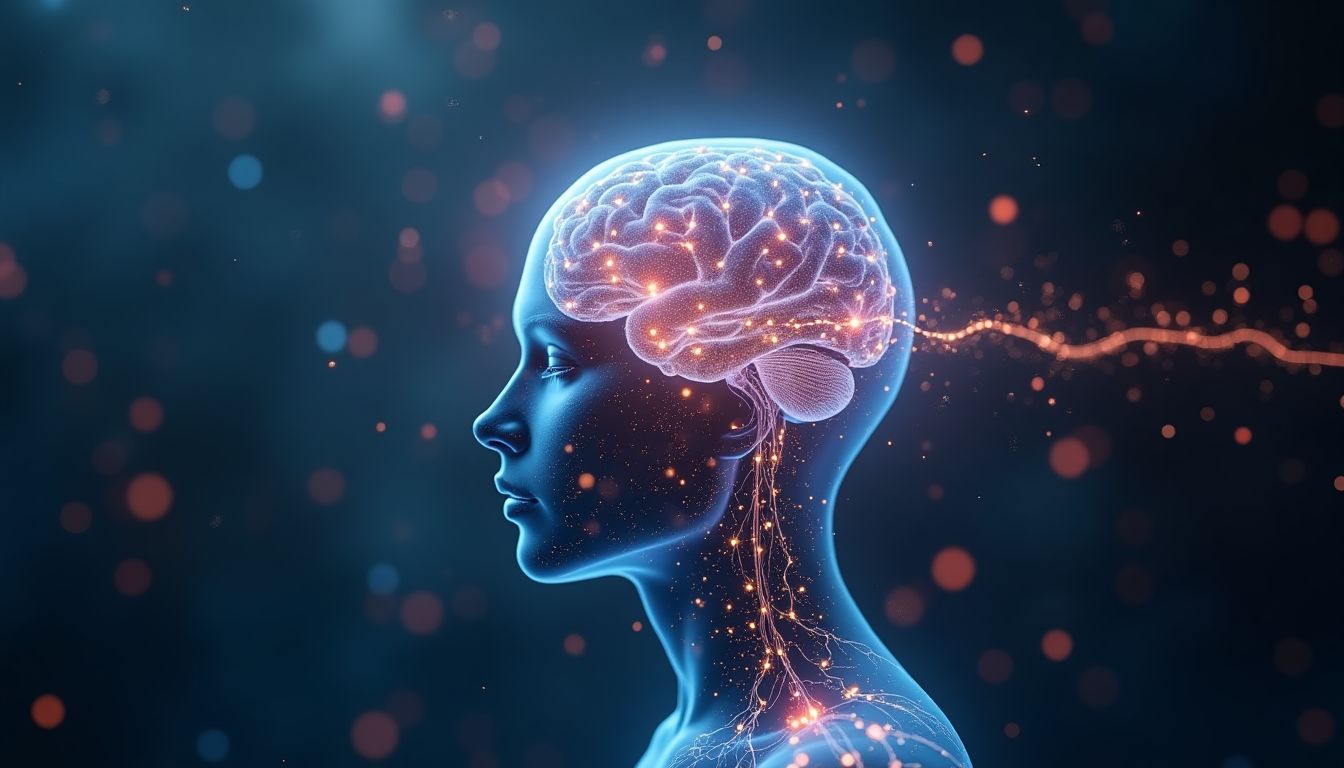
Frequently Asked Questions About Brain-Machine Symbiosis
1. What is brain-machine symbiosis?
Brain-machine symbiosis refers to the seamless integration of human consciousness with artificial intelligence (AI) through tools known as
brain-machine interfaces (BMIs).
This transformative technology leverages the ability of BMIs to allow real-time communication between the human brain and external devices. Essentially, it
enables humans to directly interact with machines and digital systems using neural signals, blurring the lines between biology and technology. Think of it as installing a two-way bridge between your thoughts and advanced computers.
2. How are current technologies enabling brain-machine interfaces?
A wave of cutting-edge technologies has propelled the development of brain-machine interfaces, making what seemed like science fiction a tangible reality.
Companies like Neuralink, founded by Elon Musk,
have developed implantable devices capable of reading and transmitting brain signals with remarkable precision.
Non-invasive systems like EEG-based brain caps also allow external communication with machines, though with lower accuracy.
Other exciting developments include tools such as the
Utah Array,
which uses arrays of tiny electrodes to form high-resolution neural maps. To interpret the data from these devices, advanced machine learning algorithms decode electrical impulses in the brain to facilitate meaningful real-world interactions.
3. What role does AI play in brain-machine symbiosis?
Artificial intelligence is the backbone of brain-machine symbiosis, acting as a cognitive translator. AI-powered algorithms read
neural activity, decode patterns, and convert thoughts into actions that machines can understand. For example, a person could imagine moving a robotic prosthetic limb, and AI would translate the brain's electrical signals into precise movement commands. One remarkable application is in
robotic arm control for paralyzed individuals. Machine learning enables these systems to adapt and grow more intuitive over time, offering users a near-seamless experience when merging biological and artificial intelligence.
4. What are some real-world applications of brain-machine symbiosis?
Brain-machine symbiosis is already making waves in fields such as healthcare, education, and space exploration:
- Healthcare: AI-paired BMIs are helping individuals regain lost abilities due to conditions like paralysis or Parkinson’s disease. For example,
prosthetic arms now respond to neural commands,
granting amputees unprecedented independence. - Learning and Development: Take education to a whole new dimension! BMIs could deliver instant language fluency or skill mastery. Algorithms acting as
"neural tutors" may one day turn your mind into a limitless library. - Space Exploration: Brain-machine symbiosis could enhance astronaut capabilities, allowing them to monitor and operate spacecraft systems intuitively under extreme conditions, as highlighted by initiatives from
NASA.
5. Are there ethical concerns with brain-machine symbiosis?
Absolutely. The fusion of AI with the human brain brings about profound ethical challenges. For starters, where do we draw the line between biological entities and advanced technology?
Ethical questions include:
- Identity and autonomy: With AI assisting—or augmenting—decision-making, does an individual lose a part of their will? Is one still “human” if thoughts are partially influenced by machine logic?
- Privacy risks: Brain-machine gear potentially makes thoughts hackable. Imagine malicious parties exploiting a BMI to implant false memories or surveil your innermost intentions.
- Inequality: As with any pioneering tech, those who can afford brain-AI upgrades may gain a significant societal edge, exacerbating existing socioeconomic divides.
Leading experts, research institutions, and ethicists—including those at
Stanford University—are actively debating frameworks for the responsible use of brain-machine symbiosis technologies.
6. Could brain-machine symbiosis eliminate mental health disorders?
While BMIs are not a cure-all, they present groundbreaking possibilities for addressing complex mental health challenges. AI-enhanced BMIs could aid in diagnosing and treating conditions like depression, anxiety, or PTSD. Imagine technology that buffers heightened emotional responses during anxiety attacks or rewires brain circuitry that perpetuates depressive thoughts. However, tampering directly with the brain raises valid concerns: is it ethical to alter a person’s perception of reality, even for their benefit?
Current trials, like those driven by
DARPA, are uncovering these technologies' full potential, though it may take years of refinement before these solutions are mainstream.
7. What risks come with merging our minds with AI?
Brain-machine symbiosis, fascinating as it may be, is not without risks. Some of the key concerns include:
- Hacking: Future hackers might target thoughts and neural commands, hijacking BMIs for exploitation or manipulation.
- Psychological implications: Altering or enhancing brain activity may create unforeseen changes to personality, cognition, or self-identity.
- Dependency: Heavy reliance on AI-integrated cognition could lead to a loss of organic problem-solving abilities. What happens if the tech goes offline?
For further reading, publications by organizations like the
IEEE
delve into the complexities of ethical AI and brain-machine systems.
8. Is the world ready for brain-machine integration?
The short answer: not yet, but we’re getting closer. Achieving harmony between regulatory frameworks, societal adaptation, and the rapid pace of technological advancement will be key. Governments and private sectors alike must work together to address cybersecurity concerns, affordability, and the moral implications of such groundbreaking tech. Educational campaigns and public debates are crucial to prepare humanity for the era of enhanced brains. Even companies, like
Meta,
and tech hubs are grappling with the societal impact of brain-computer systems.
Wait! There's more...check out our gripping short story that continues the journey: The Neural Key
Disclaimer: This article may contain affiliate links. If you click on these links and make a purchase, we may receive a commission at no additional cost to you. Our recommendations and reviews are always independent and objective, aiming to provide you with the best information and resources.
Get Exclusive Stories, Photos, Art & Offers - Subscribe Today!
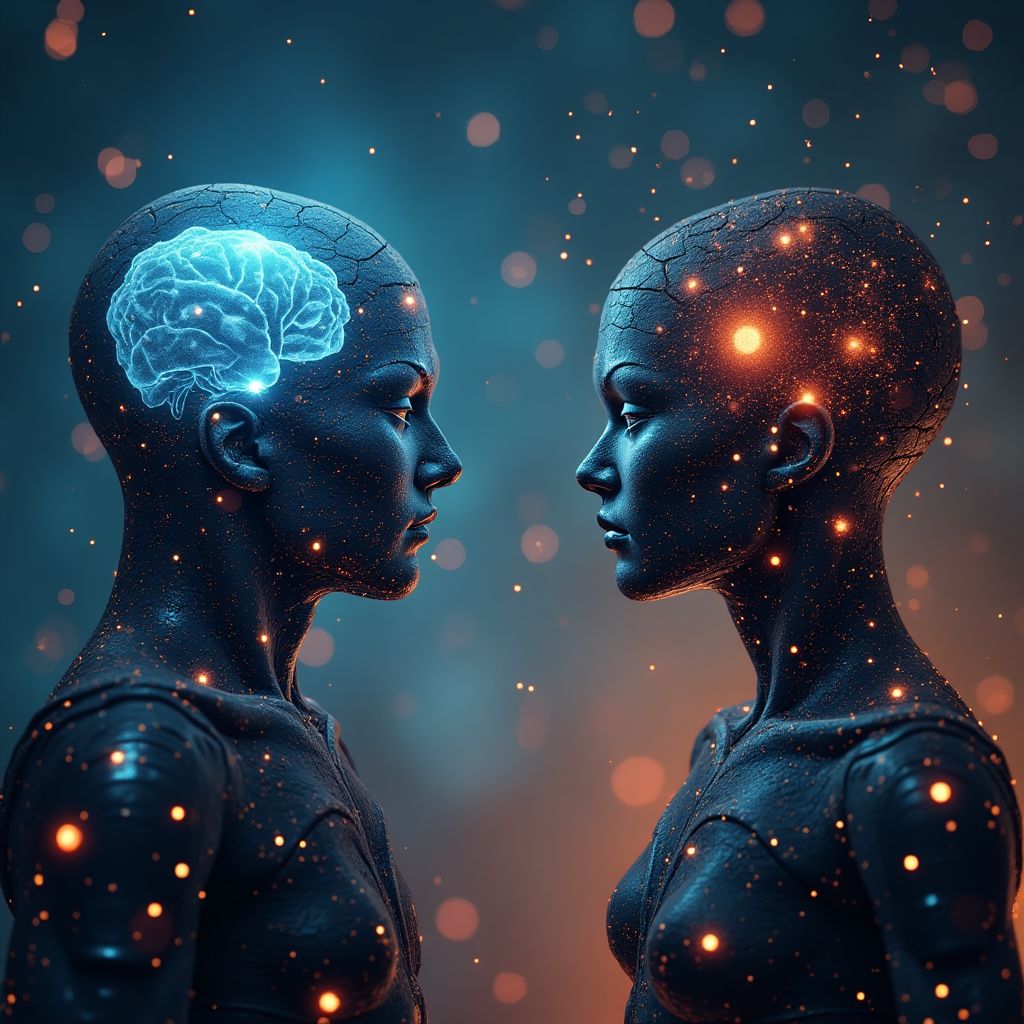
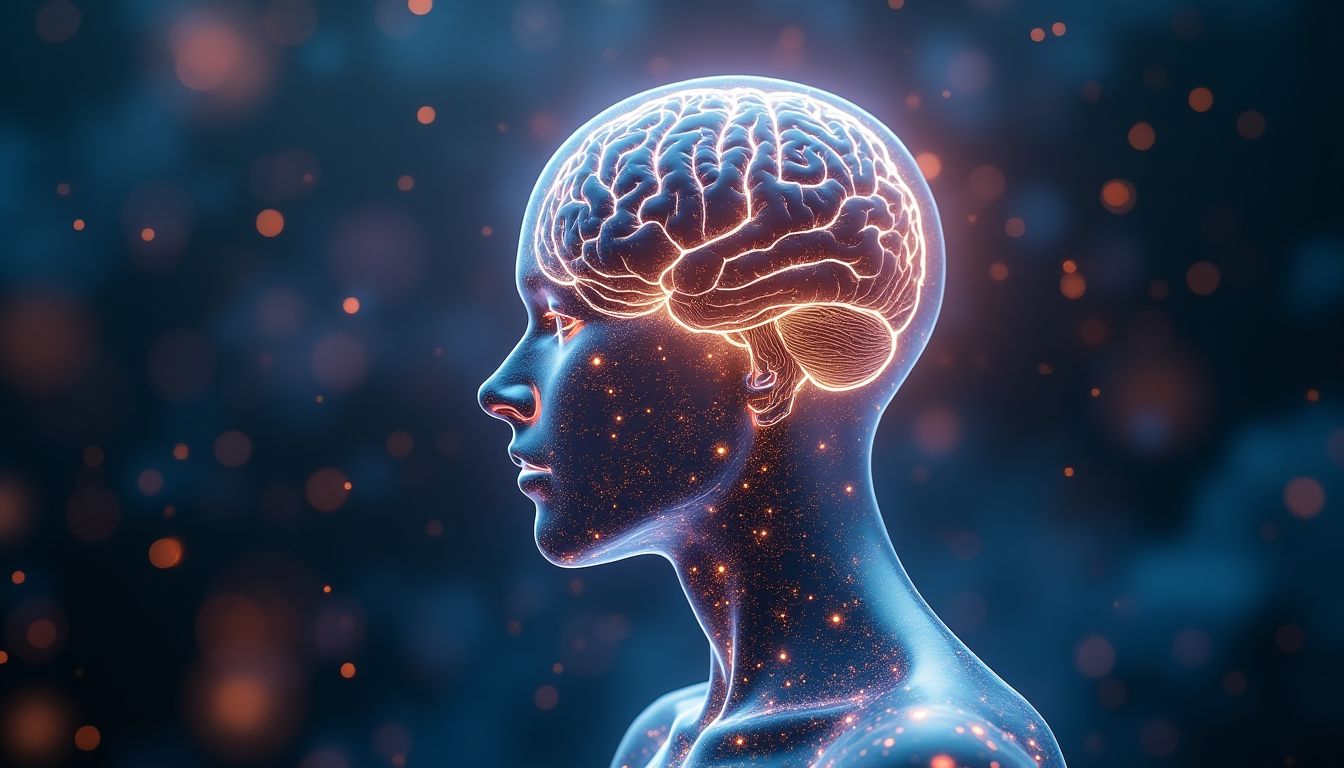
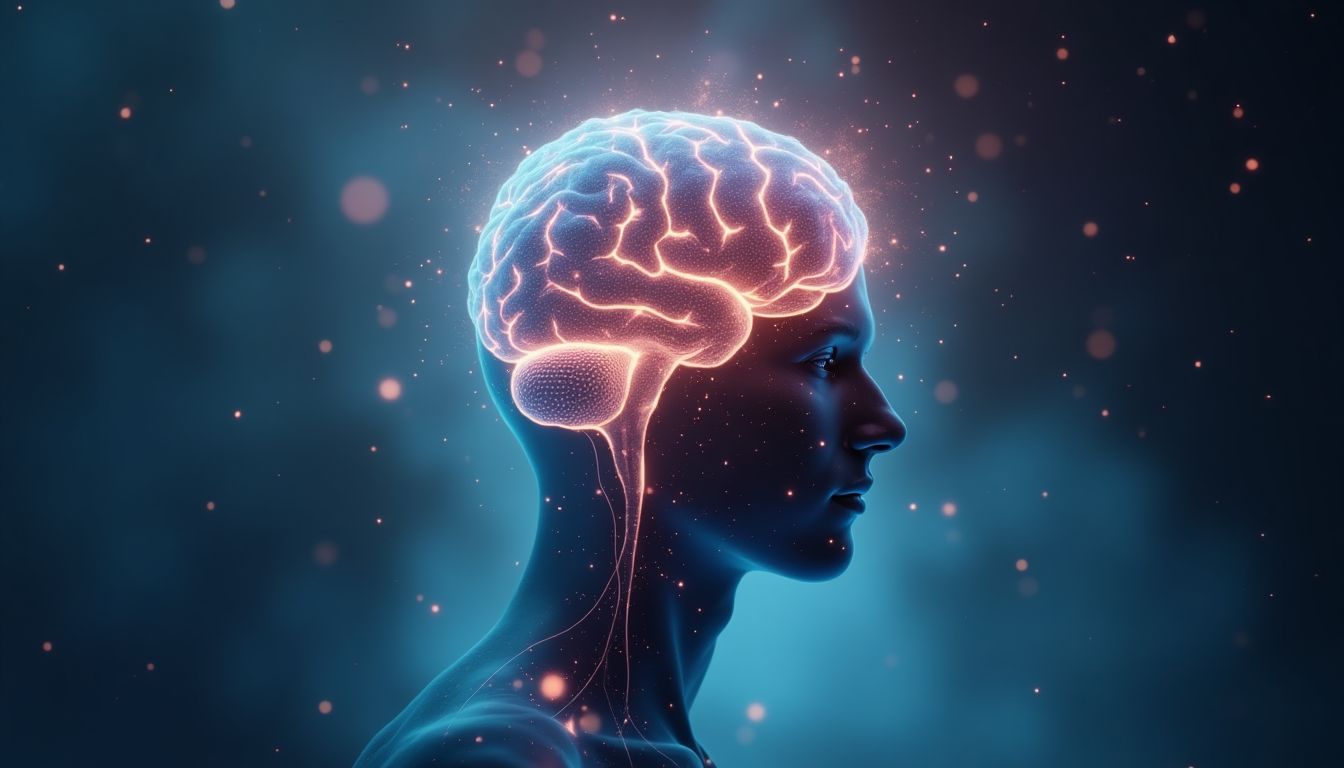
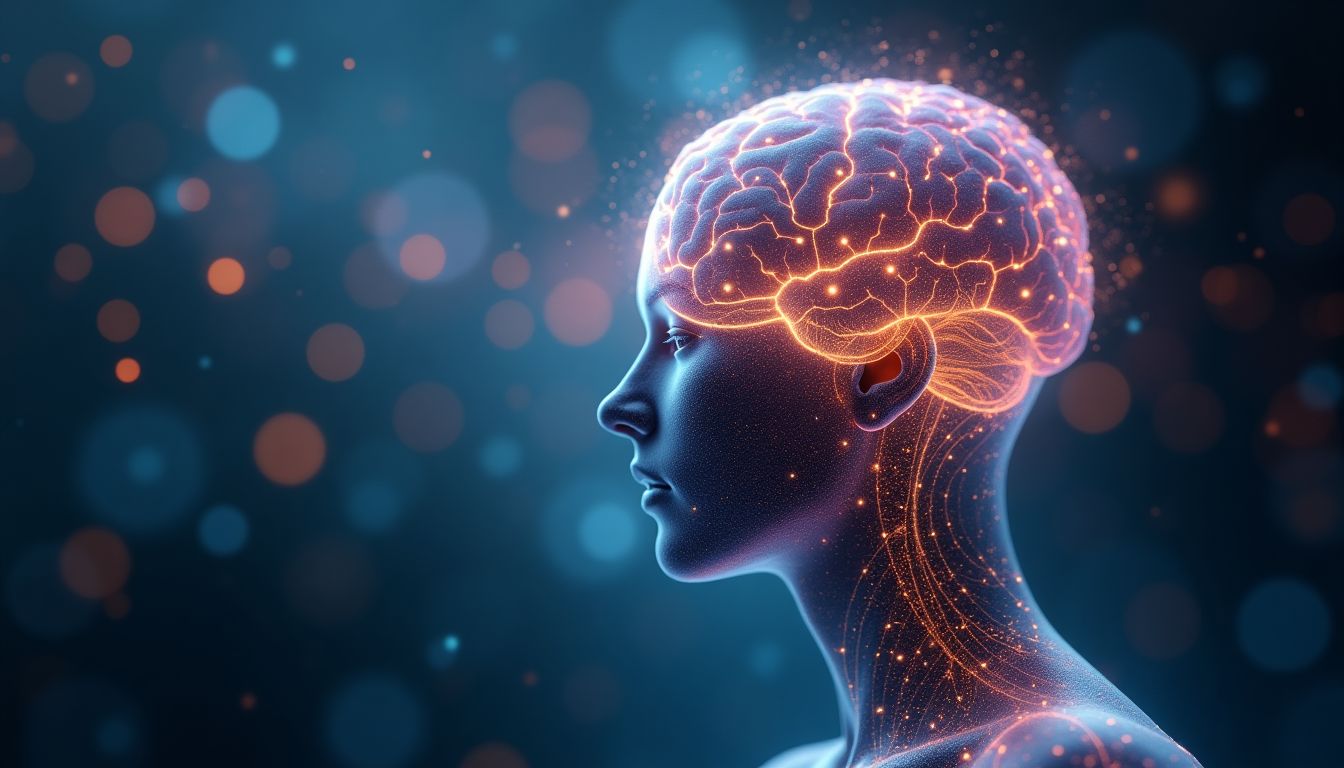
























2 comments